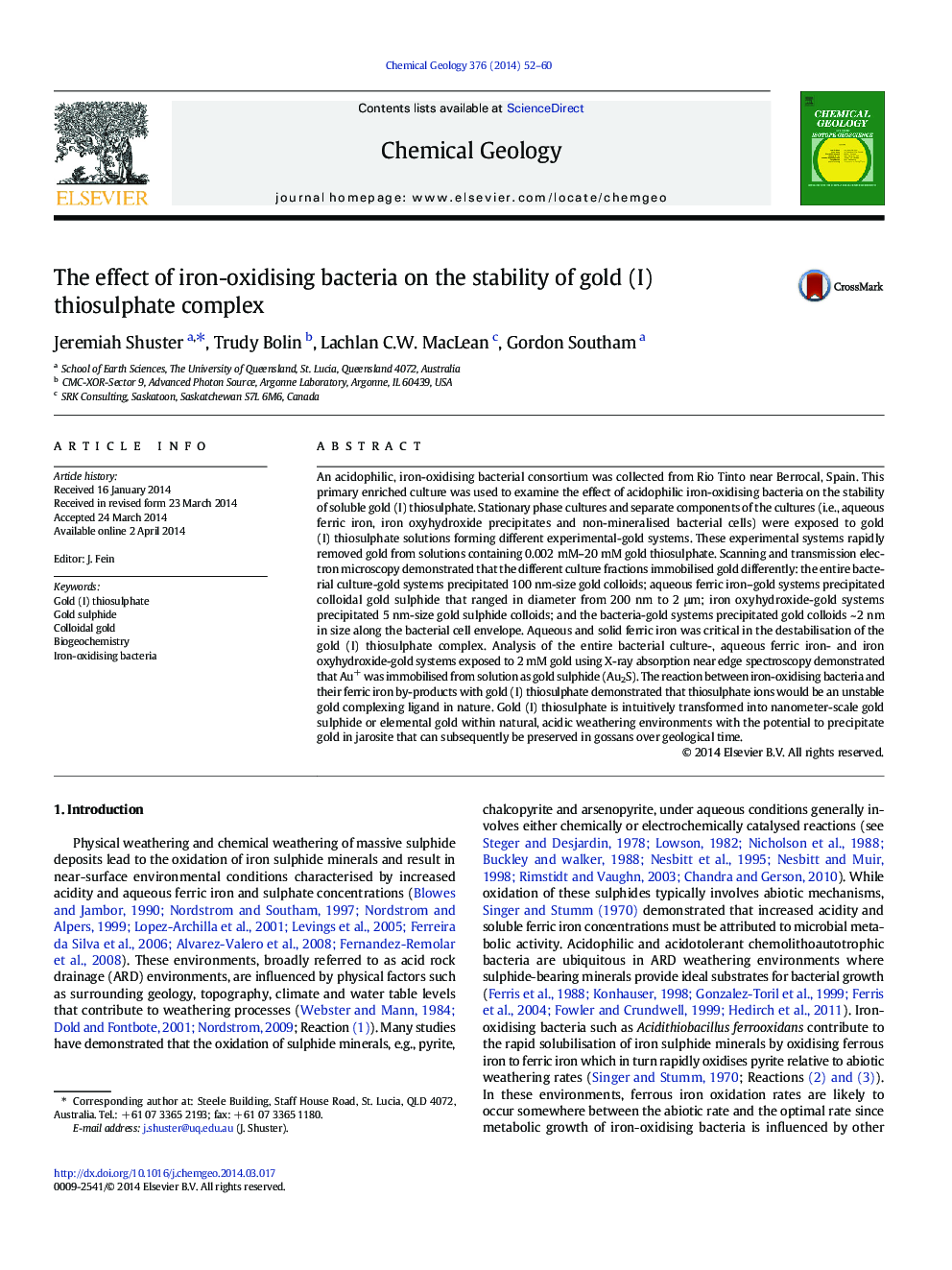| کد مقاله | کد نشریه | سال انتشار | مقاله انگلیسی | نسخه تمام متن |
|---|---|---|---|---|
| 6436651 | 1637595 | 2014 | 9 صفحه PDF | دانلود رایگان |

- Gold (I) thiosulphate is unstable in the presence of iron-oxidising bacteria.
- Gold (I) thiosulphate is unstable in the presence of ferric iron.
- Gold (I) thiosulphate is transformed into gold sulphide or elemental gold.
- Precipitate of gold in jarosite can be preserved in gossans over geological time.
An acidophilic, iron-oxidising bacterial consortium was collected from Rio Tinto near Berrocal, Spain. This primary enriched culture was used to examine the effect of acidophilic iron-oxidising bacteria on the stability of soluble gold (I) thiosulphate. Stationary phase cultures and separate components of the cultures (i.e., aqueous ferric iron, iron oxyhydroxide precipitates and non-mineralised bacterial cells) were exposed to gold (I) thiosulphate solutions forming different experimental-gold systems. These experimental systems rapidly removed gold from solutions containing 0.002 mM-20 mM gold thiosulphate. Scanning and transmission electron microscopy demonstrated that the different culture fractions immobilised gold differently: the entire bacterial culture-gold systems precipitated 100 nm-size gold colloids; aqueous ferric iron-gold systems precipitated colloidal gold sulphide that ranged in diameter from 200 nm to 2 μm; iron oxyhydroxide-gold systems precipitated 5 nm-size gold sulphide colloids; and the bacteria-gold systems precipitated gold colloids ~ 2 nm in size along the bacterial cell envelope. Aqueous and solid ferric iron was critical in the destabilisation of the gold (I) thiosulphate complex. Analysis of the entire bacterial culture-, aqueous ferric iron- and iron oxyhydroxide-gold systems exposed to 2 mM gold using X-ray absorption near edge spectroscopy demonstrated that Au+ was immobilised from solution as gold sulphide (Au2S). The reaction between iron-oxidising bacteria and their ferric iron by-products with gold (I) thiosulphate demonstrated that thiosulphate ions would be an unstable gold complexing ligand in nature. Gold (I) thiosulphate is intuitively transformed into nanometer-scale gold sulphide or elemental gold within natural, acidic weathering environments with the potential to precipitate gold in jarosite that can subsequently be preserved in gossans over geological time.
Journal: Chemical Geology - Volume 376, 29 May 2014, Pages 52-60